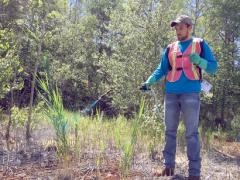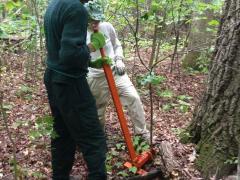Mixed News on Invasive Species Front

Despite the discouraging discovery of an invasive species near Lake George, the Adirondacks have also seen some recent bright spots in the fight against invasive species.

Despite the discouraging discovery of an invasive species near Lake George, the Adirondacks have also seen some recent bright spots in the fight against invasive species.

The Japanese barberry tree, a popular landscaping shrub with attractive flowers, was banned from sale in the state of New York in the spring of 2015. The Japanese barberry tree is one of the 11 plants on the state’s banned invasives list, but it will soon be returning to nurseries because of research done by the University of Connecticut. The return will likely take place in the next year.

This is part two in a three-part series on how to create an invasive plant management plan. This section will guide you through outlining the description, purpose of management, desired condition, and current condition of each site under consideration

Science Daily reports--
Date: May 18, 2017
Source: Cambridge University Press
Summary: It is easy to assume that getting rid of invasive plants will allow a local ecosystem to return to its natural state, with native vegetation flourishing once again. However, the impact of weedy invaders can linger for years, a new report outlines.

Will invasive species ruin baseball?
Well no, not really. However, quite a few people, including Major League Baseball are concerned that they could ruin a part of baseball tradition. The enemy this time is the emerald ash borer. The metallic green beetle should not be anywhere in the United States but it hitched rides over to our country using our modern methods of transportation. More specifically, this beetle came by way of cargo ships across the ocean.
The USDA Forest Health Technology Enterprise Team has released a Field Guide for the Biological Control of Weeds in Eastern North America. This guide includes a quick search by flower color (non-flowering are gray), discusses basic plant and biocontrol biology, and has a symbol-driven efficacy quick guide (status for individual biocontrols: high-low priority, caution with redistribution, illegal to redistribute, no establishment, failed to establish).